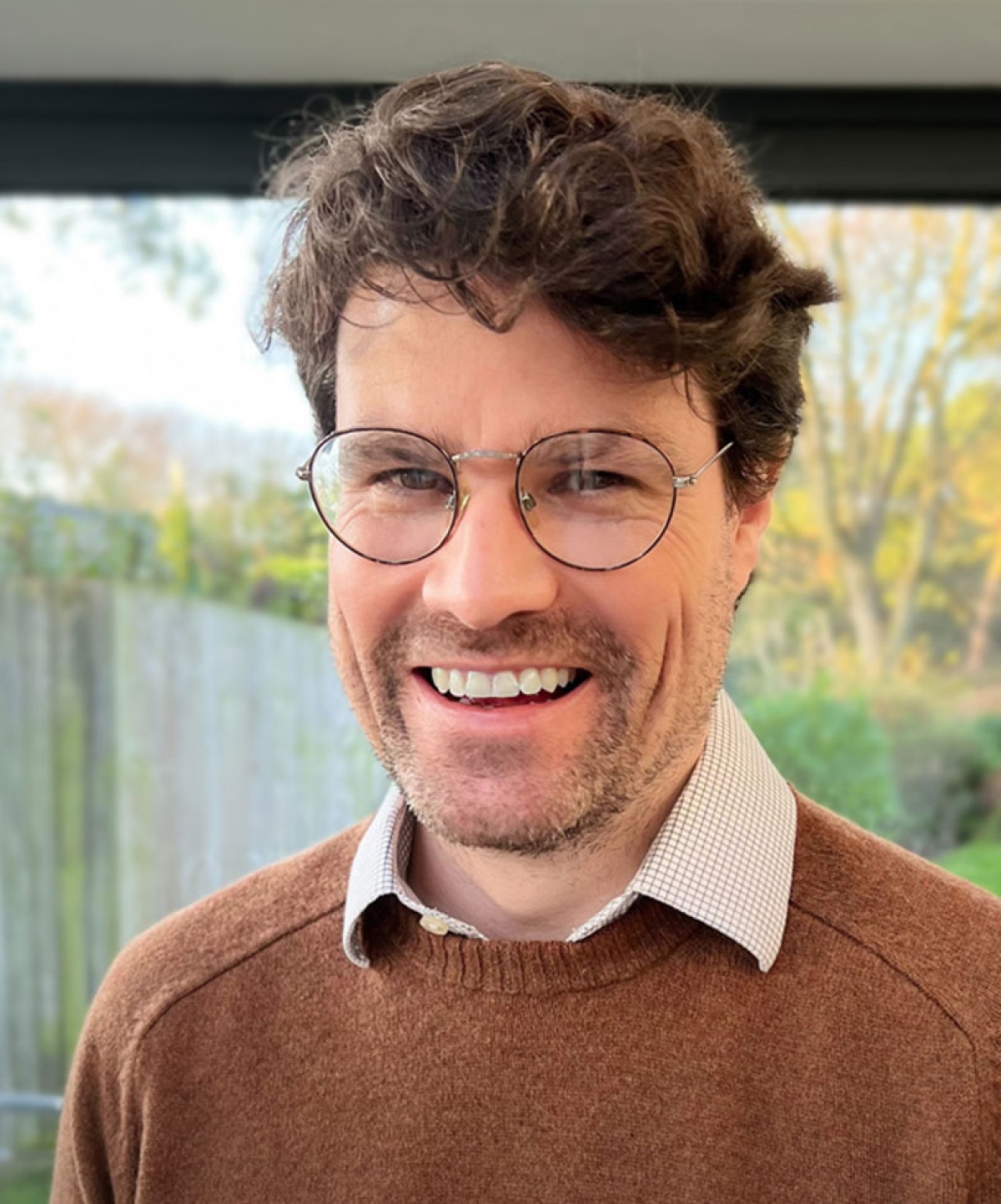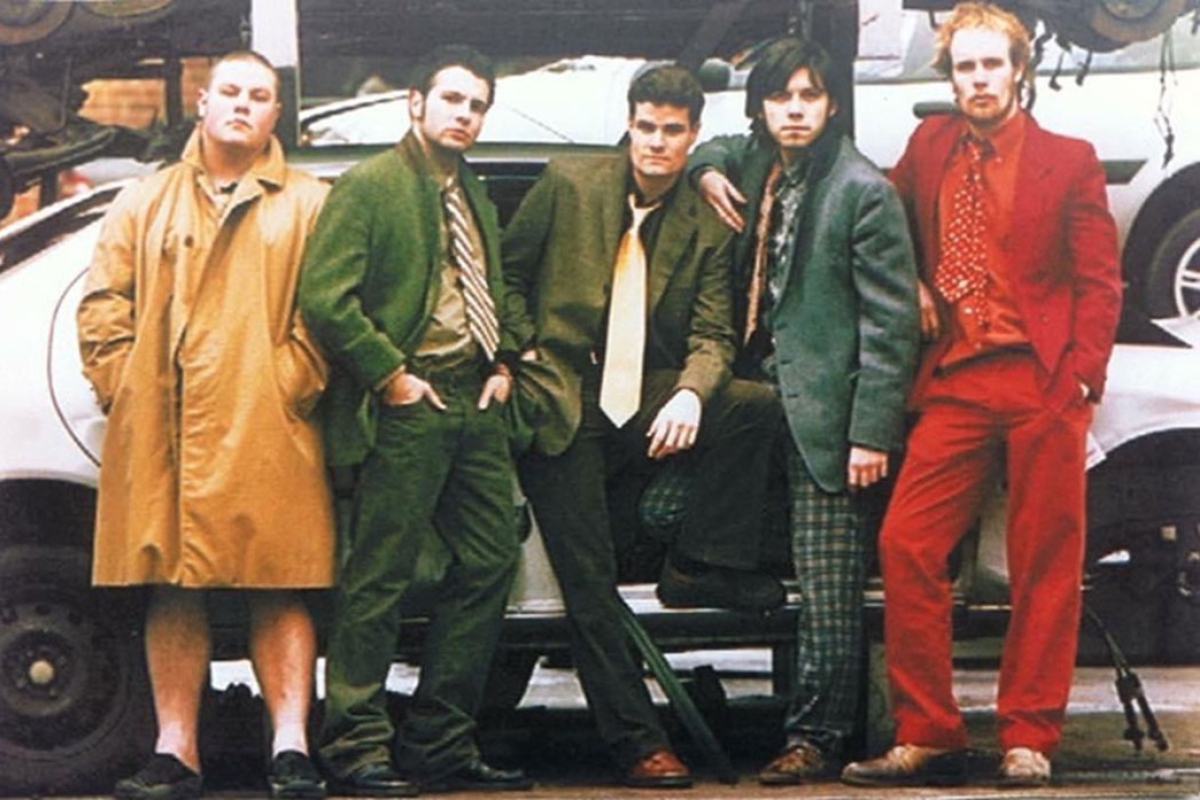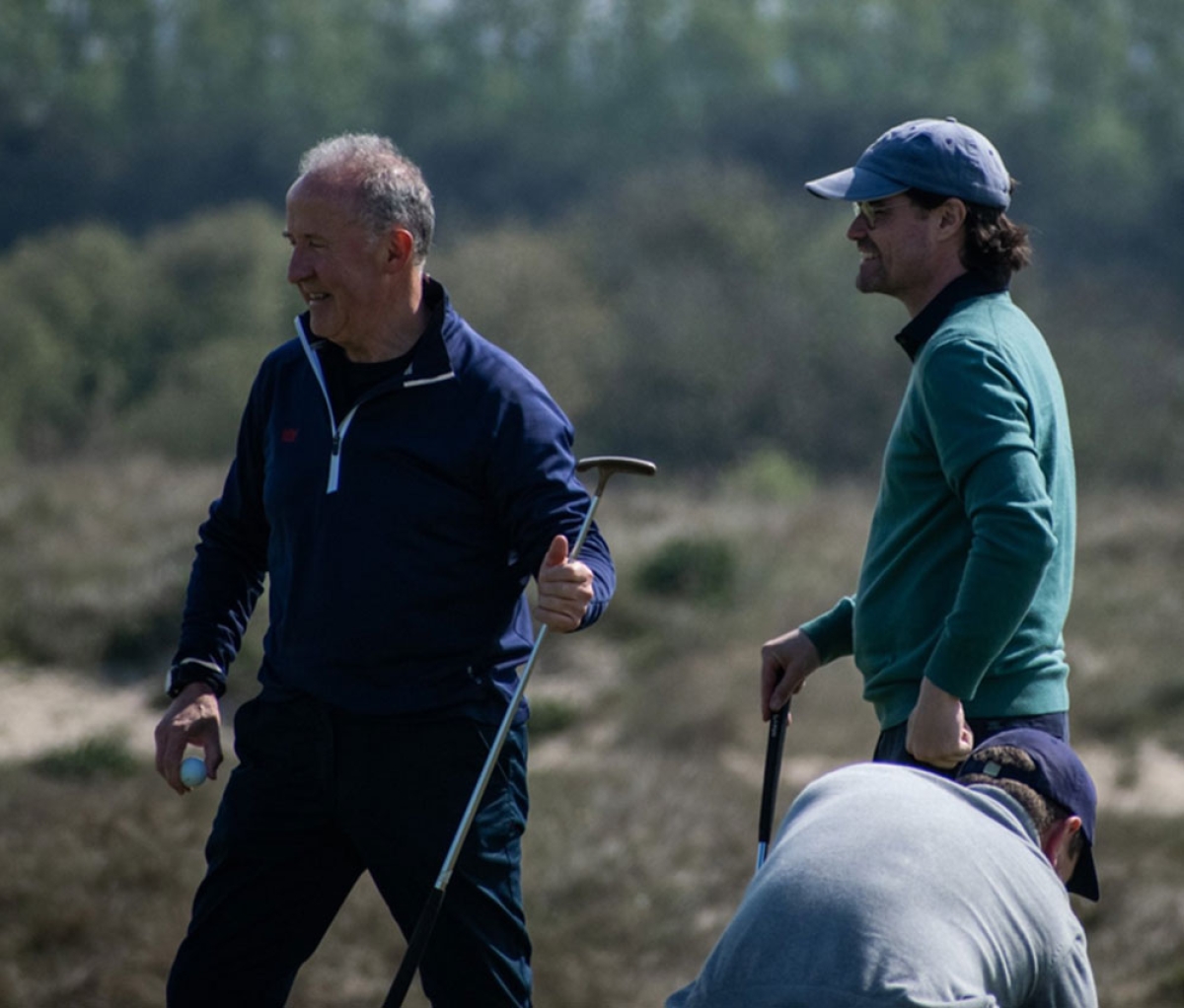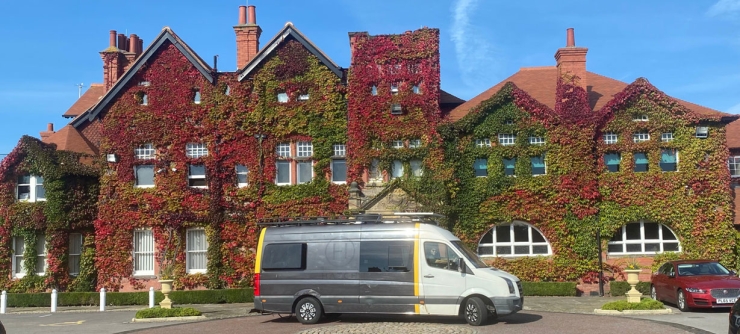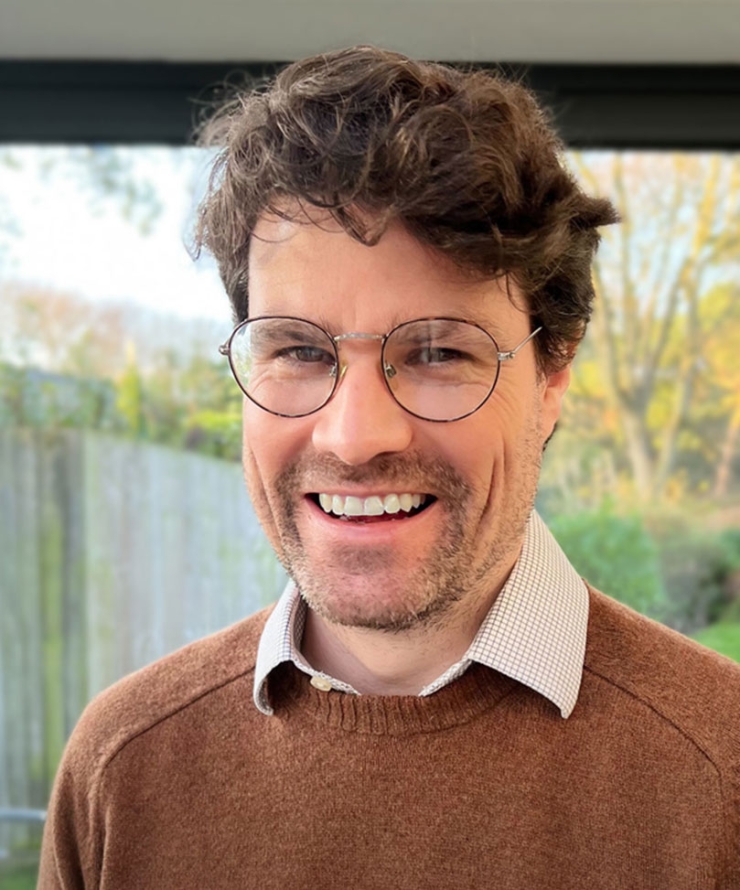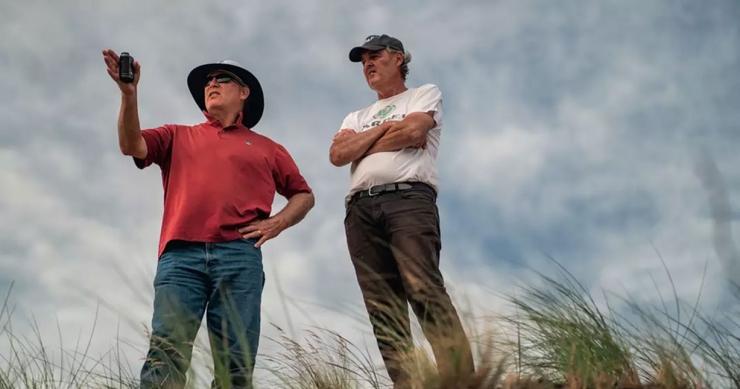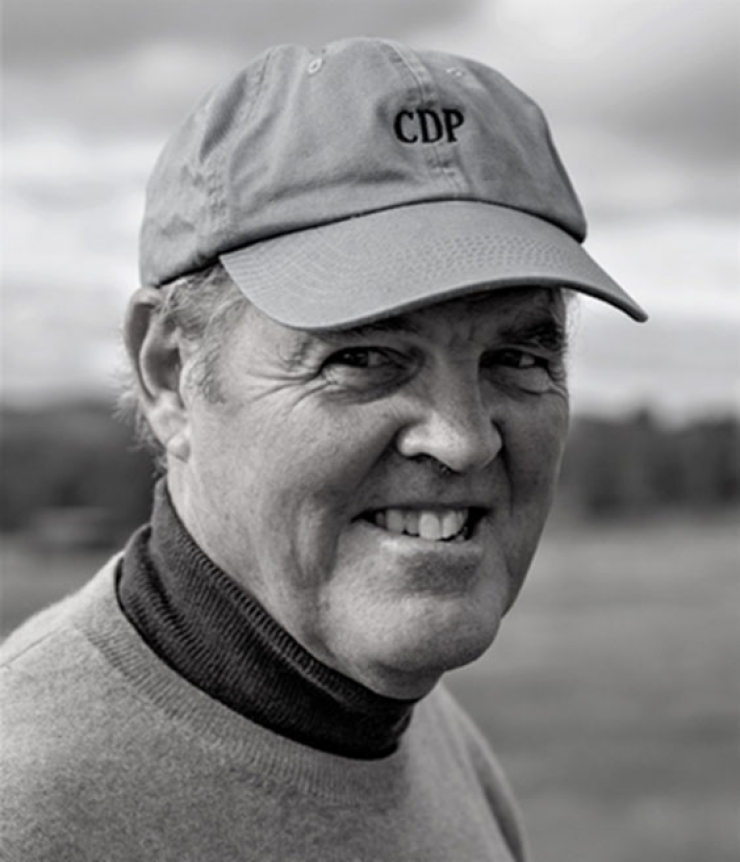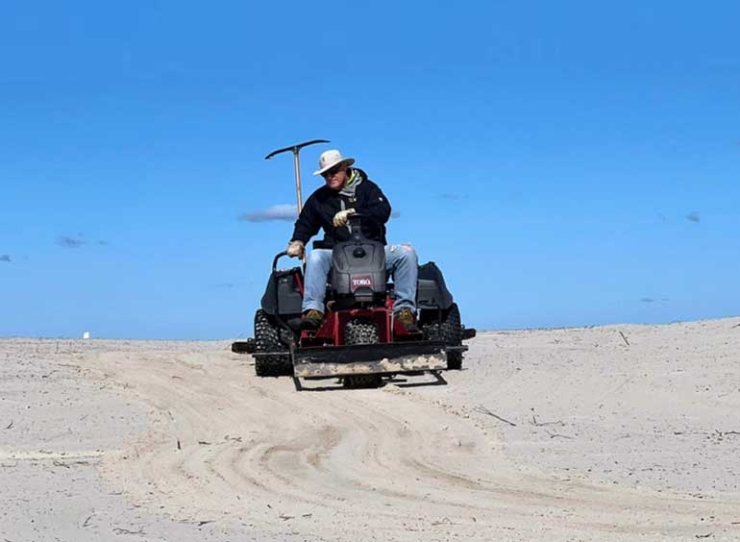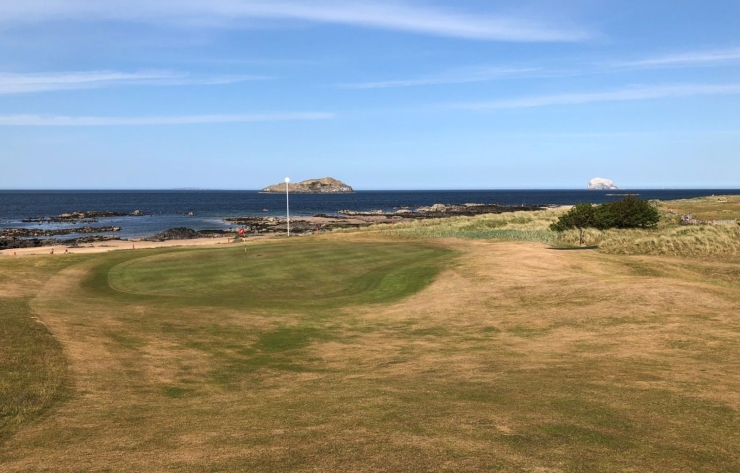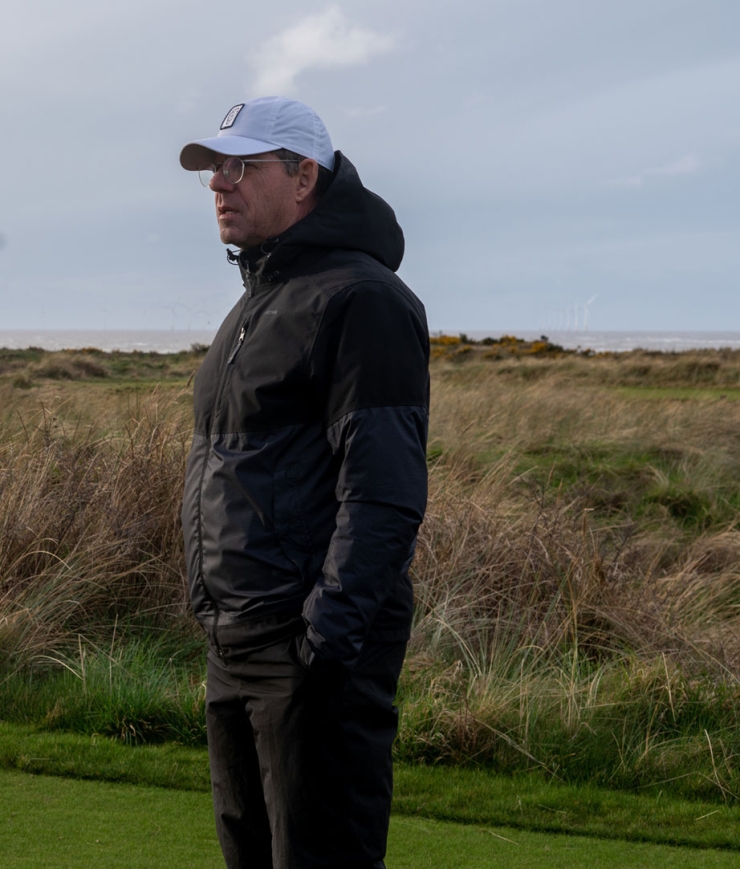10 February 2023
A Stroke Of Genius
Joe McDonnell's path from music to CDP's Head of Imagery.
Joe McDonnell is a self-proclaimed golf geek with an insatiable appetite for the game. In January 2023, he became our Head of Imagery.
He is at present one of the most exciting individuals in the world of golf course architecture. But it hasn’t always been like that. In fact, this is his first job in the world of golf.
Sam Cooper sat down with Joe to understand how exactly Joe went from fronting a band to visualising golf courses.
Sam: Joe, golf is an enormous part of your life. It seems a good a place as any to start. Where did that come from and what are your early memories of the game?
Joe: My dad is a long-time player, doesn't play anymore in his old age. He got me into golf. When I was a young kid, we'd say, oh, where's Daddy? He's at the golf course. Groan. As I got closer to about the age of ten, I saw what was to be had from the game of golf. It wasn't hitting a ball and scoring in as few point shots as possible. There was something about it that felt different from a game of darts, or pool. There was more to it than that.
When you go and see a golf course, you're playing across these sorts of shaped, creative playgrounds. For me, it started at a municipal course on Anglesey - Llangefni. We'd go there on holiday and that was my first real exposure to golf.
I was one of eight kids and playing golf with my dad meant I got to spend more time with him than any of the others. Looking back, I was fortunate for that.
Sam: You’re one of the most creative people I know. When did some of your other passions start to get in the way of your golf?
Joe: As I got into my mid-teens, golf fell by the wayside and music became my main passion. I’d learned the piano and I got into that big time. I could play guitar, sing and started to enjoy the craft of song writing.
Also, art! Painting, watercolours particularly. I’d go into school and spend all my time in the art room or going to play piano with some of my pals. We started to get serious about music. If we weren’t rehearsing, we were playing gigs. It felt like this could be a career.
I didn't go to university. Straight away I was doing music. Trying to pursue a music career and working side jobs to pay the bills. It was tough, we were touring and played some incredible gigs. There are so many wonderful memories from that period of my life.
We supported Keane to an audience of thousands. We played to a few dozen people in a village hall in the Outer Hebrides. We did everything and I wouldn't change the experiences of that phase of my life for anything. It was an adventure.
Sam: When did you make the decision to move on from the music years?
Joe: It became clear that the music industry was changing. The emergence of online streaming meant the entire music industry had to adapt. Contracts renegotiated and record labels completely scrambling to survive. We weren’t making enough money to carry on and working menial jobs to subsidise it was wearing thin.
Around this time, my older brother had founded a company called Monterosa with two of his friends. It was early days, 14 years ago, but they were growing. I was pretty competent in basic computing. I started to help them out with spreadsheet research on a part time basis.
I couldn’t code but I managed to carve out a bit of a niche there. The business essentially allowed people to interact with live events. Be it a reality TV show or a music or sporting event. If it had been software for the sake of it, for accounting perhaps, I don’t think it would have been for me. But because it was something I could get passionate about, I loved it. Over the course of a decade I went from being the most junior guy in the business to Head of Content.
Sam: You were based in London at the time, when did you decide to move back to Hoylake?
Joe: I’d met and married Nats, and we’d had two kids by then. We’d moved out of the city to Reading. I’d stopped playing music in any serious capacity and my days outside of work seemed to be spent on a train. I'd get home after the kids were in bed. We were growing tired of London and knew we had to make a change.
So I poured some potion into my wife's ear and she said, okay, let's move to the Wirral. We packed up and moved. Close to my parents, and close to Hoylake.
This was 2019 and coming back up just made me realise how much I’d starved myself of golf for those London years.
Sam: Did you decide by then you wanted to do something creative in the golf world instead?
Joe: Actually, it was through Monterosa that I got my taste back for golf. We had been commissioned to produce a 3D live tracking application for golf. A bit like shotlink but in real time and with zero margin for error.
It was a complex challenge. How were we going to take real world 3D positioning data and plot it in a virtual space with great accuracy? I’ve always loved problem solving and the fact that it was golf related appealed to me.
We spent a lot of time on it and finally arrived at a solution that worked well. It’s now won awards and is doing great, but that project allowed me to rekindle my passion for the game. It also helped me understand survey data, geo-referenced terrain modelling and coordinate reference systems – things I now use regularly in my new position with CDP.
Sam: Before we talk about CDP, when did you first decide to turn your talents to golf artwork?
Joe: I’d been scratching an itch on golf history and the evolution of courses for a while. I like the characters across the history of golf, but my real passion lies in the golf courses. What they were and what they are now. They’re evolving and that fascinates me. Different fashions, terrain - everything changes over time.
Also, we’re in the internet age of digitisation. Twitter would often throw up a cool picture or a plan of a long lost routing, or a document describing old features. Looking for clues where an old green was, barely visible in a crusty old black and white image, just made me light up.
Maybe it’s under trees, or under houses even. The fact almost every golfer unknowingly walks past long lost features fascinates me.
So, as I was finding that out, I would try to visualise it. It started with Photoshop, trying to overlay a modern aerial on an old image, or vice versa. If it weren’t for Google Earth, or the historical research put on social media, I wouldn’t have been able to go down this rabbit hole at all. As it was, I posted my stuff online and people seemed to love it.
Sam: Is that where your famous map of the Old Course came from?
Joe: I’d been messing around with digital watercolour brushes and developed a technique which I liked. Jasper Miners of Evalu18 must have liked it too. He reached out and described a project he’d been working on for some time. Jasper’s a great researcher of golf history and had curated a map of the Old Course with dozens of named features on it. Bunkers with names found in the most obscure books and articles. He wanted to combine his research with my artwork. I thought, why not?
We posted the finished image online and were blown away with the response. People were getting in touch and saying, can we buy this? Is this a print that we can buy? The answer at
the time was no, we hadn't even thought about that.
With a bit of effort, we worked out a way to do it. The number of people who bought one was staggering. From normal people who loved the game to complete legends of the game.
Sam: This is the part of the story where I get involved. I was on my Links from the Road tour then so was able to help with some drone surveys.
Joe: Yeah, we’ve known each other for, what, 20 years? Our fathers played golf together at Hoylake and, despite a 10 year age gap, we knew each other before I headed off to London. Coming back to the Wirral, it was great to reconnect and discover our shared passion for golf and architecture.
Sam: I’d started doing some drone mapping for Frank Pont around this point. I remember you calling to say there might be merit in combining the technical survey data into your watercolour approach. I was delighted to get involved.
Joe: Absolutely. By stitching together thousands of photos into one super high-resolution image it does a couple of things. First, it gives a level of detail that a single image taken from a much higher altitude can’t compete with. Second, it can produce a three-dimensional model of the landscape using a technique called photogrammetry. That combination of photography with elevation data really got me excited.
Your surveys were getting better and better as you refined the capture technique. It meant I could get more detail out of the landscape while using these lovely, crisp aerial photos.
Combining the two outputs, I was able to manipulate the look and feel of the models. I'd paint the imagery on top and then shine a low light across it to bring the contours to life. A consistent, dramatic, and low light makes everything pop. You can't capture that in the real world. Sunrise and sunset gives the light, but only lasts for a short window. Maybe half an hour in summer. To capture the full detail of the course can take over 4 hours. We’d developed something unique, and people were interested.
Sam: The approach shows the subtle contours of flatter links courses beautifully. How do you think your approach has been influenced by growing up at Hoylake? Both for the artwork, and in your passion for showcasing architectural evolution.
Joe: I think it very unlikely that I'd be as into the history had it not been for Hoylake being home. You can walk through the hallways of the club as a kid and have absolutely no idea what you're looking at. You can hear the words John Ball, you can hear Bobby Jones but it doesn't mean anything. I don't know what age that is for you, younger than me, but it was only when I was about 35 that it really started to dawn on me what an incredible place it is - not only its place in the game, but also the fact that the course itself has undergone so many changes. Its evolution has been remarkable. It's also one of the earliest courses, not in Scottish terms, but when it comes to golf in England, it's fascinating to look back at how it's evolved.
Yes, a lot of the early links courses went through huge changes pre-1900, that was common. But the changes never really stopped. In the early 20th century, Colt was making large changes to the routing. Then after World War II, of course, not only was the country in a state of disrepair, but Liverpool and the surrounding region was really hit hard financially. So not a lot happened to the course other than to lose a load of bunkers. It went quiet for, let's say, ten years.
But then the changes started again. New holes being built, greens moving. This has continued all the way to the present day. To have such an historic and high profile links undergoing near constant evolution is rare.
Also, as you say, it's a subtle course. Not characterised by big dunes, the gently rumpling landscape is often mislabelled as 'flat'. In the same way The Old Course, Carnoustie and Muirfield have more restrained undulation, Hoylake is similar. The low light of the artwork allows those contours to come to life.
Sam: So between us and Jasper, we spent a great couple of years developing and enhancing the techniques that went into the art. It was a period of enormous change for us both. You were gaining notoriety in the golf world and started getting calls from architects, I remember. When did you turn your attention from showcasing historic changes visualising proposed ones?
Joe: I would say when I first started doing this stuff, my ability to produce something from nothing was relatively limited. My knowledge and understanding of the software and the tools of the trade were pretty rudimentary. I understood the science of the land and coordinate reference systems, but the artistic flair was lacking.
As I started doing more of this, I realised that I could spin stuff up, I could sculpt a golf hole out of a flat piece of digital clay. Over time, I managed to work out a way to merge
that ability with existing survey data. From drone surveys, LiDAR, whatever.
But it’s not just moving the shapes, it’s getting the aesthetic of the proposed to fit in with the existing. I had to new techniques to texture the ground to look like type of grass and sand that would feature on it.
Typically, architects have always shown their designs on a top-down plan with contours. These are great
technical drawings, but you do need imagination to understand how they’ll appear in the flesh. So, you either trust the architect by reputation and leave them to it, or you’re a little more sceptical and work doesn’t progress.
A well rendered 3D model can allow everyone to understand the vision. They can ask more informed questions about the design. It even helps the architects troubleshoot potential issues before it’s constructed.
They want to see stuff that's compelling, convincing, tells the story, gets the point across quickly and clearly. That's what I'm trying to do right now as we speak. I'm actually trying to sculpt a new green for a client in Germany.
Sam: So, you were still working at Monterosa whilst developing these techniques in your spare time? At what point did you realise your days at Monterosa were coming to an end and you’d transition full time into the golfing industry?
Joe: I'd been working stupidly long hours trying to do two jobs. It got to a point where I knew that my heart was in golf and the visualisation of courses. The golf side was starting to become financially viable – I’ve got a young family to support and I couldn’t be taking risks. It’s not about the money, it’s about the passion for it – but I had a duty to be pragmatic.
Simon Haines, a fabulous researcher, and owner of probably the best collection of digitised golf images, had become a good friend. He put me in touch with Edward Cartwright. Basically he had very kindly said if you need visualisations, Joe’s your man. We started on some pitch materials and I enjoyed working with the guys.
I'd followed Mike Clayton's podcasting and writings quite extensively. I was totally aware of Mike DeVries and his creations across the world. Of course, I knew of Frank Pont. I was interested in Frank's work because of the Colt connection at Hoylake.
It came to a head. I wanted to transition full time into golf so put together a proposal. I took it to the partners, they had a think, and we came to an agreement. I now find myself as a member of the CDP team as Head of Imagery. It sounds a grand title; I hope I can live up to the billing!
Sam: Well, as a colleague of yours and knowing you as well as I do, I don’t think that will be an issue. It’s a perfect match on all sides. What are you getting your teeth into at the moment?
Joe: With the nature of the partnership, there's a lot of work on across the entire firm and it comes in all shapes and sizes. It can be anything from changing one green site to an entire course restructure or new build. Unfortunately, I didn't join in time to be involved with the Seven Mile Beach project. I have to get out there.
I would say there are various points in a sales cycle where I can help. When we have another opportunity to build a course from scratch, I can help visualise the ideas. I may well be involed with the new courses we are to build in Vietnam.
At the moment, of course, I’m working on some exciting proposals for you and Frank at one of the country's foremost clubs. Helping a club membership understand the proposals is essential. As a firm, I think it's important to know the proposals can stand up to rigorous critique. We don't want to change courses for the sake of it, they must be improved. A model can ensure we are happy with how all aspects of the design interact with one another in three dimensions.
Sam: What about the future? You’ve helped pioneer some pretty revolutionary techniques. How do you think your side of golf architecture will evolve over the coming years?
Joe: I think about this a lot. I’ve become pretty adept at building and sculpting golf courses in a virtual world. I think the time will come when a GPS bulldozer can almost 3D print a full scale, real life version of the digital course. There’s talk about it but in reality it’s still a long way off. But if the technology continues to advance, who knows? It will open up possibilities for courses that have never existed before. In terms of the landscape great golf can be built on. In terms of the construction costs. Everything.
Sam: Exciting times ahead for sure. The reputation you’ve built over the last few years is extraordinary. Personally, I’m delighted we have your talents at CDP!
